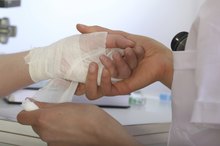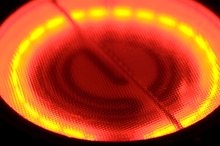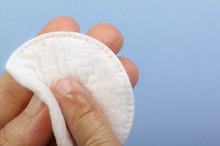What does fact checked mean?
At Healthfully, we strive to deliver objective content that is accurate and up-to-date. Our team periodically reviews articles in order to ensure content quality. The sources cited below consist of evidence from peer-reviewed journals, prominent medical organizations, academic associations, and government data.
The information contained on this site is for informational purposes only, and should not be used as a substitute for the advice of a professional health care provider. Please check with the appropriate physician regarding health questions and concerns. Although we strive to deliver accurate and up-to-date information, no guarantee to that effect is made.
How to Treat a Freeze Burn
Freeze burn, cold burn or frostbite occurs when the body is exposed to cold temperatures for enough time to cause damage 12. In sufficiently cold temperatures, the body transfers heat from the skin to the cold element in contact with the body, which causes damage. Frostbitten or cold-burned skin appears hard and pale, and can become numb. Hands, feet, nose and ears are most susceptible to freeze burn, and in order to save the affected area, first aid treatment is immediately required.
If you are experiencing serious medical symptoms, seek emergency treatment immediately.
Seek shelter immediately. To treat freeze burn, removing the source of cold is necessary 1.
How to Treat a Kitchen Burn
Learn More
Remove wet clothing and contracting jewelry. If the body shows signs of hypothermia, treat it immediately by wrapping in warm blankets.
Soak burned areas in warm water. Water should be between 104 to 108 degrees; hot water can cause further damage. Soak for 20 to 30 minutes, keeping the water circulating.
What Are the Treatments for Ice Pack Burn?
Learn More
Apply dressings to the burned areas. Dressing should be clean and sterile. Take care to separate fingers and toes.
Wrap the areas in warm blankets and keep the area from refreezing.
Warnings
Freeze burned areas should be moved as little as possible, even after they are thawed. Do not use heating elements like radiators or heating blankets or hair dryers to thaw skin. Direct heat can further damage skin. Frostbite is a serious medical condition that can result in loss of limbs. Professional medical care should be sought immediately if it is available.
Related Articles
References
Warnings
- Freeze burned areas should be moved as little as possible, even after they are thawed.
- Do not use heating elements like radiators or heating blankets or hair dryers to thaw skin. Direct heat can further damage skin.
- Frostbite is a serious medical condition that can result in loss of limbs. Professional medical care should be sought immediately if it is available.
Writer Bio
A professional writer since 2008, Charlotte Kirkwood’s articles have appeared on Pop Syndicate, Ani.me, CollectionDX and other websites. She enjoys writing about travel, films, literature, beauty, homemaking, pop culture and anime. Kirkwood's previous jobs include makeup artist and book seller. She studied English and art history at Southwest State University.









